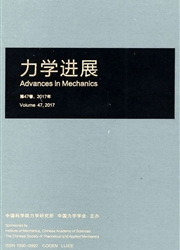

 中文摘要:
中文摘要:
物质点法采用质点离散材料区域,用背景网格计算空间导数和求解动量方程,避免了网格畸变和对流项处理,兼具拉格朗日和欧拉算法的优势,非常适合模拟涉及材料特大变形和断裂破碎的问题.本文详细论述了物质点法在基本理论、算法和软件开发方面的进展,包括广义插值物质点法、接触算法、自适应算法、并行算法、与其他算法的杂交和耦合等.系统地总结了物质点法在超高速碰撞、冲击侵彻、爆炸、动态断裂、流固耦合、多尺度分析、颗粒材料流动和岩土失效等一系列涉及材料特大变形问题中的应用,展示了其相对于传统数值计算方法的优势.
 英文摘要:
英文摘要:
Material point method (MPM) discretizes the material domain by particles, and solves the momentum equations on a predefined background mesh. MPM avoids mesh entanglement and involving convection term, by taking advantages of both the Lagrangian and the Eulerian methods. So it is very promising in the numerical simulation of problems involving extreme material deformation and fracture. The state of the art of the theory, the algorithm development and implementation, and the software development of material point method are reviewed in detail. The generalized material point method, the contact algorithm, the adaptive algorithm, the parallel algorithm, and the coupling with other methods are included. Applications of MPM to the problems involving extreme material deformation, such as hypervelocity impact, penetration, explosion, dynamic fracture, fluid-structure interaction, multiscale analysis, and granular material flow and rock and soil failure, are investigated systematically. The applications demonstrate the advantages of MPM over conventional numerical methods.
 同期刊论文项目
同期刊论文项目
 同项目期刊论文
同项目期刊论文
 Internal-structure-model based simulation research of shielding properties of honeycomb sandwich pan
Internal-structure-model based simulation research of shielding properties of honeycomb sandwich pan A multiscale framework for high-velocity impact process with combined material point method and mole
A multiscale framework for high-velocity impact process with combined material point method and mole 期刊信息
期刊信息
